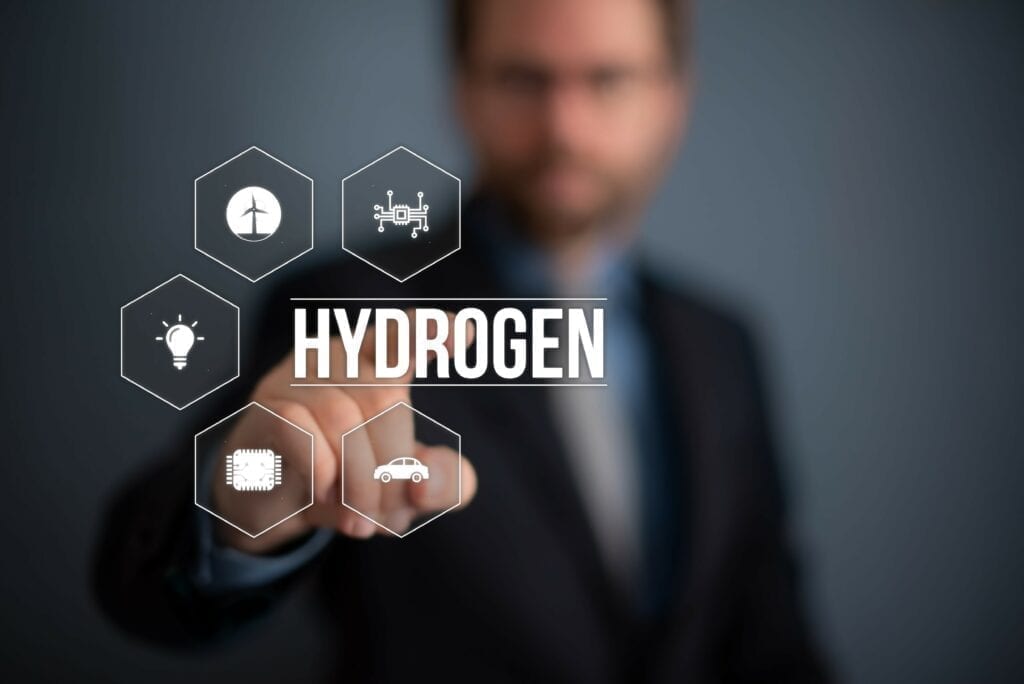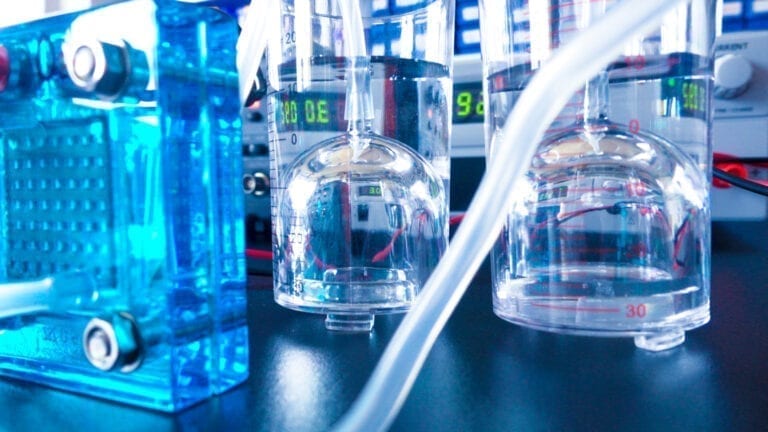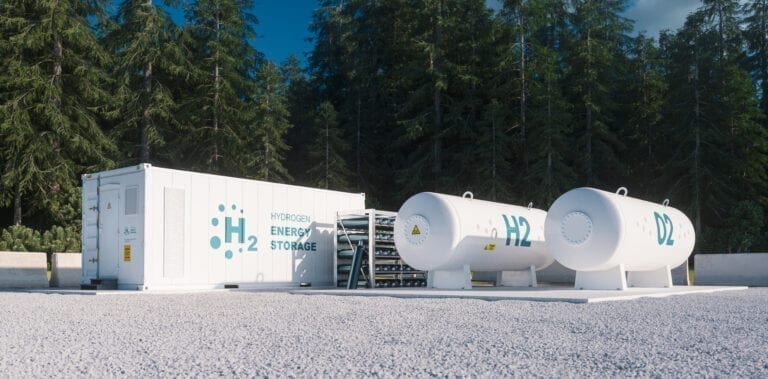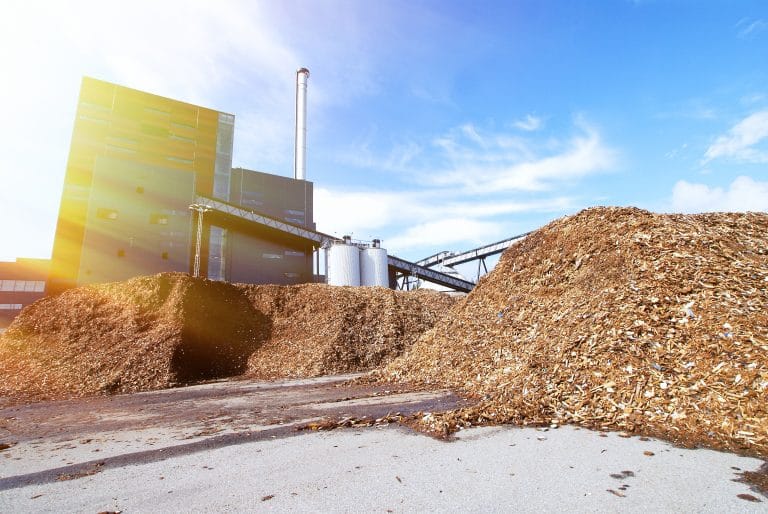How biomass gasification can help boost global green hydrogen production
Increasing hydrogen use in the global energy mix has huge potential to make global energy production greener and more sustainable. But there are challenges.
The most common method of hydrogen production actually increases the global carbon footprint significantly (see details below). And those methods which are more environmentally-friendly are very expensive. However, there is a better solution which, at present, remains under the radar: biomass gasification.
This article explores the drawbacks of currently-classified hydrogen production methods, and how increased use of biomass gasification could solve these, resulting in a faster, cheaper, proven — and much more environmentally-friendly — way to meet global emissions targets.
Why is everyone talking about hydrogen right now?
It’s official. Hydrogen is back in fashion.
Many experts agree that increasing hydrogen use can help support the decarbonization of industry, transport, power generation and buildings around the world. But people have been touting the benefits of this on and off ever since the energy crisis of the 1970s, with little long-term impact. So what’s changed?

In short, the difference is government – and intergovernmental – commitments to address climate change. According to this 2019 report by the International Energy Agency (IEA) produced for the G20 summit, hydrogen “is enjoying unprecedented momentum around the world and could finally be set on a path to fulfil its longstanding potential as a clean energy solution.”
Another example of this momentum is the recent launch of the European Union’s Strategy for Energy System Integration. This includes a detailed strategy aimed specifically at promoting the use of hydrogen to help meet the EU’s goal of becoming carbon-neutral by 2050.
“The EU strategies for energy system integration and hydrogen... will pave the way towards a more efficient and interconnected energy sector, driven by the twin goals of a cleaner planet and a stronger economy”
European Commission Tweet
As this Royal Society paper puts it: “The need for system-level change has rekindled interest in the hydrogen economy.”
Hydrogen’s potential to decarbonize the economy
A paper from Mitsubishi Heavy Industries sets out the current enthusiasm very clearly:
“[Hydrogen’s] potential as a fuel has long been acknowledged. However, as the world races to limit the effects of global warming, its potential as an emission-free energy carrier is being rediscovered.” “It offers the potential to decarbonize transport, heating systems and industrial processes – areas of energy use that are currently difficult to green through renewable electricity.”
In other words, relying on renewables alone makes it difficult, if not impossible, to hit zero-emissions targets. Therefore, hydrogen can pick up the slack.
Hydrogen is the simplest and most abundant chemical element on earth. It can be used to both store and carry usable energy, but must be produced from other compounds which contain it, such as fossil fuels, as well as from biomass, geothermal, solar and wind energy.
The major potential for hydrogen use is as a clean fuel. This means it can be used to create heat and power, as well as fuel for a wide range of vehicles – including trains, trucks, ships and aircraft.
Burning hydrogen produces no CO2 and very low levels of pollution. “It thus offers a solution to decarbonise industrial processes and economic sectors where reducing carbon emissions is both urgent and hard to achieve,” according to the EU’s Hydrogen Strategy document.
The cost of producing green hydrogen is falling, but remains very high
The falling cost of green hydrogen production is another factor adding to the current excitement. As it stands, hydrogen production is classified into three colours:
- Grey hydrogen – hydrogen produced from fossil fuels, such as gas and coal
- Blue hydrogen – produced from fossil fuels with carbon-capture technology added
- Green hydrogen – produced via electrolysis using electricity generated by renewables
IEA analysis finds that the cost of producing hydrogen from renewable electricity could fall 30% by 2030 as a result of declining costs of renewables and the scaling up of hydrogen production.
Yet these costs remain high. For example, this IEA chart from 2018 estimates the cost of hydrogen production from coal at 1.5 – 2.9 US dollars per kg, and from natural gas at 0.9 – 3.2 US dollars per kg. Contrast this with the cost of producing hydrogen from renewables; – via a process called electrolysis – which can be as high as 7.5 USD per kg.
Despite predicted declining costs, estimates from the US Department of Energy still put the future cost of renewable-sourced hydrogen at 4.2 USD per kg — because “producing a unit of hydrogen from water requires four times more energy than from hydrocarbons”.
Even so-called “blue” hydrogen is prohibitively expensive today, due to the need to use carbon-capture technology to render it carbon-neutral.

Most hydrogen production is environmentally damaging
This is a problem because of the differing environmental impact of these hydrogen production methods. According to industry analyst Shayne Willette, grey – or fossil-fuel derived – hydrogen “accounts for over 95% of all hydrogen production”.
As the IEA explains: “Hydrogen is already with us at industrial scale all around the world, but its production is responsible for annual CO2 emissions equivalent to those of Indonesia and the United Kingdom combined.”
So, although using hydrogen as a fuel can cut CO2 emissions drastically, current methods of producing hydrogen emit the same volume of CO2 as a combined population of 334 million. It seems paradoxical to push this as a decarbonization strategy. At the same time, the high costs of “green” and “blue” hydrogen production are eye-watering. What’s the solution?
Biomass gasification can produce green hydrogen
According to Shayne Willette, “Some say green hydrogen should be expanded to include other clean hydrogen production pathways beyond electrolysis”. While pointing out that biomass gasification “has not been assigned a color”, he explains that it has been used for hydrogen production in the United States since the early 1990s.
“As the world continues to push for decarbonization, it is important to explore all solutions on the table,” he adds.
In the announcement of its Strategy for Energy System Integration, the European Commission makes the same point: “biomass gasification has not been assigned a color, though its usage for hydrogen production is not a new process”.
According to the US Department of Energy, gasification plants for biofuels “can provide best practices and lessons learned for hydrogen production”, adding that it “anticipates that biomass gasification could be deployed in the near-term timeframe”.
“Biomass” refers to any renewable organic resource, including agriculture crop residues, forestry waste, organic municipal solid waste, and even animal waste. Gasification is the process of converting these resources into energy and other useful byproducts – including hydrogen.
Gasification works by thermochemically transforming waste feedstocks (in this case, biomass) using temperatures in excess of 700℃ and a highly controlled supply of oxygen or steam. This creates a synthetic gas or syngas. This syngas contains hydrogen, which can be separated and purified.
To return to Shayne Willette: “Producing hydrogen via gasification aids in solving two environmental problems: mounting waste stocks (e.g., landfills) and the carbon-intensive hydrogen production process.”
In other words, biomass gasification is far less carbon-intensive then “grey” or “blue” hydrogen production, and far cheaper than existing “green” hydrogen production.

How long before advanced gasification is classified as a green hydrogen production method?
The clear implication of Shayne Willette, the US Department of Agriculture – and possibly even the European Commission – is that biomass gasification is:
- Proven to be an effective hydrogen production method
- Should be classified
- Also comes with other benefits, such as reducing waste
Here at EQTEC, we have developed several gasification facilities, with a 6MWe reference plant in Spain that converts biomass into pure syngas and we have more plants in the pipeline, which you can read about here.
From this commercial scale experience and our extensive R&D – the universities of Lorraine, France, and Extremadura, Spain, have test facilities based on our advanced gasification technology – we have test results from nearly 60 different kinds of feedstocks, ranging from agricultural and forestry waste to municipal and industrial waste, biomass and plastics.
The syngas we produce from wood waste contains around 40% hydrogen. And this process is 100% green.

Even when we process municipal solid waste (MSW) – also called refuse-derived waste (RDF) – the biomass proportion averages 10 – 20% of the total. Hydrogen produced from that organic waste would also qualify as green.
We’re very excited at the prospect of a qualified third party taking the time to classify our hydrogen as green. In fact, consider this an official invitation to anyone who would like to come and analyse our process.
We strongly believe our advanced gasification is uniquely placed to boost green hydrogen production and help to meet the world’s ambitious carbon-reduction targets. All we need is the classification……
